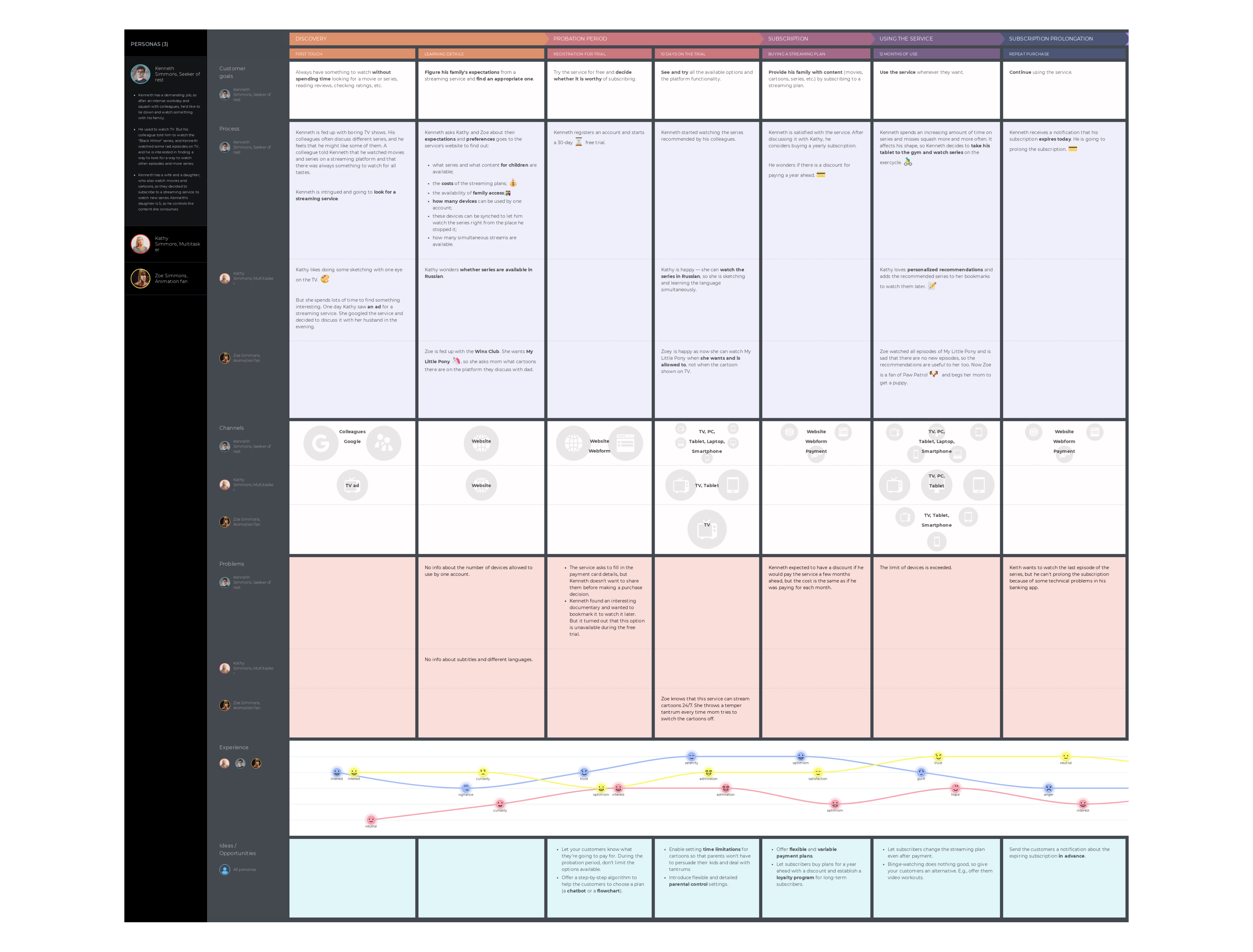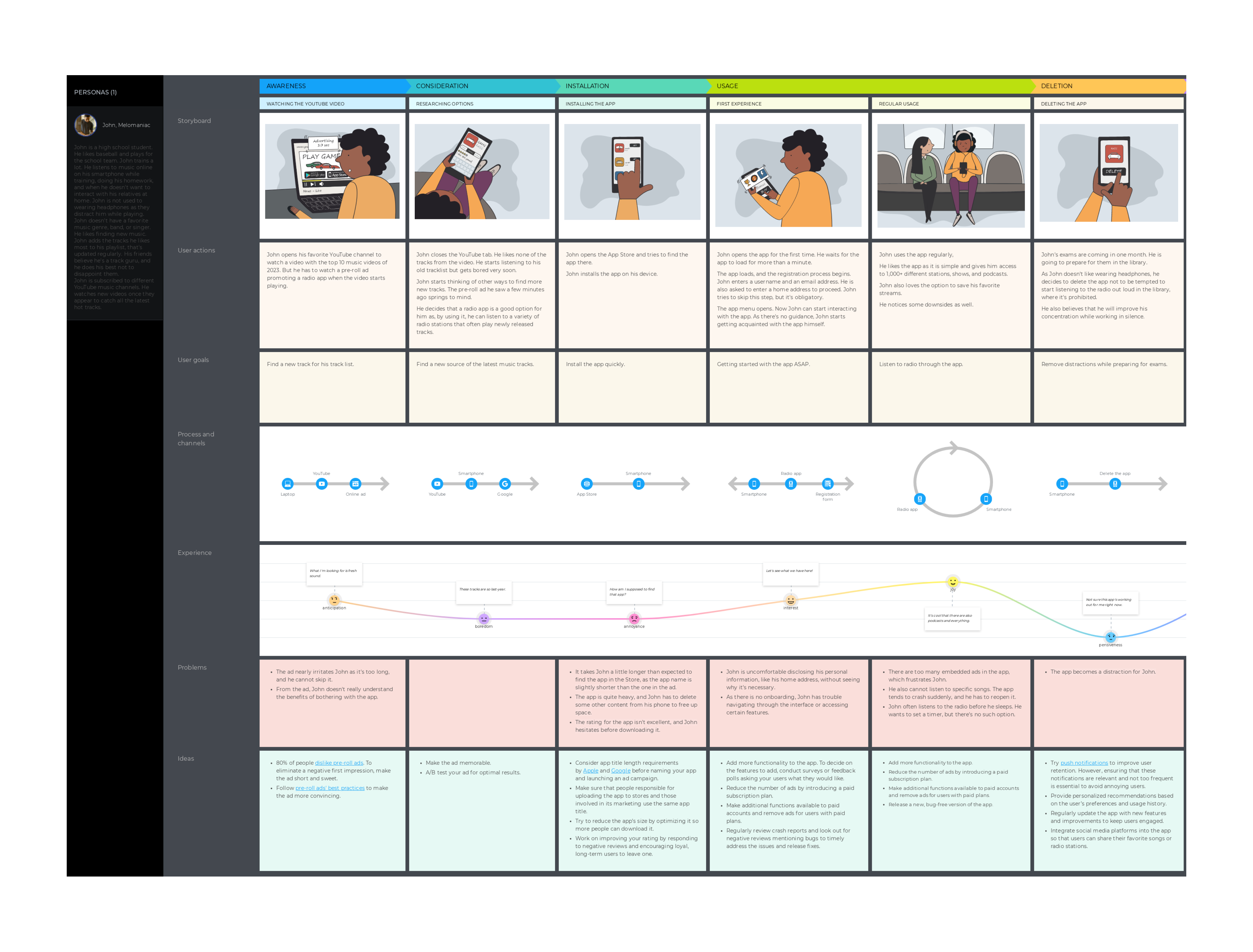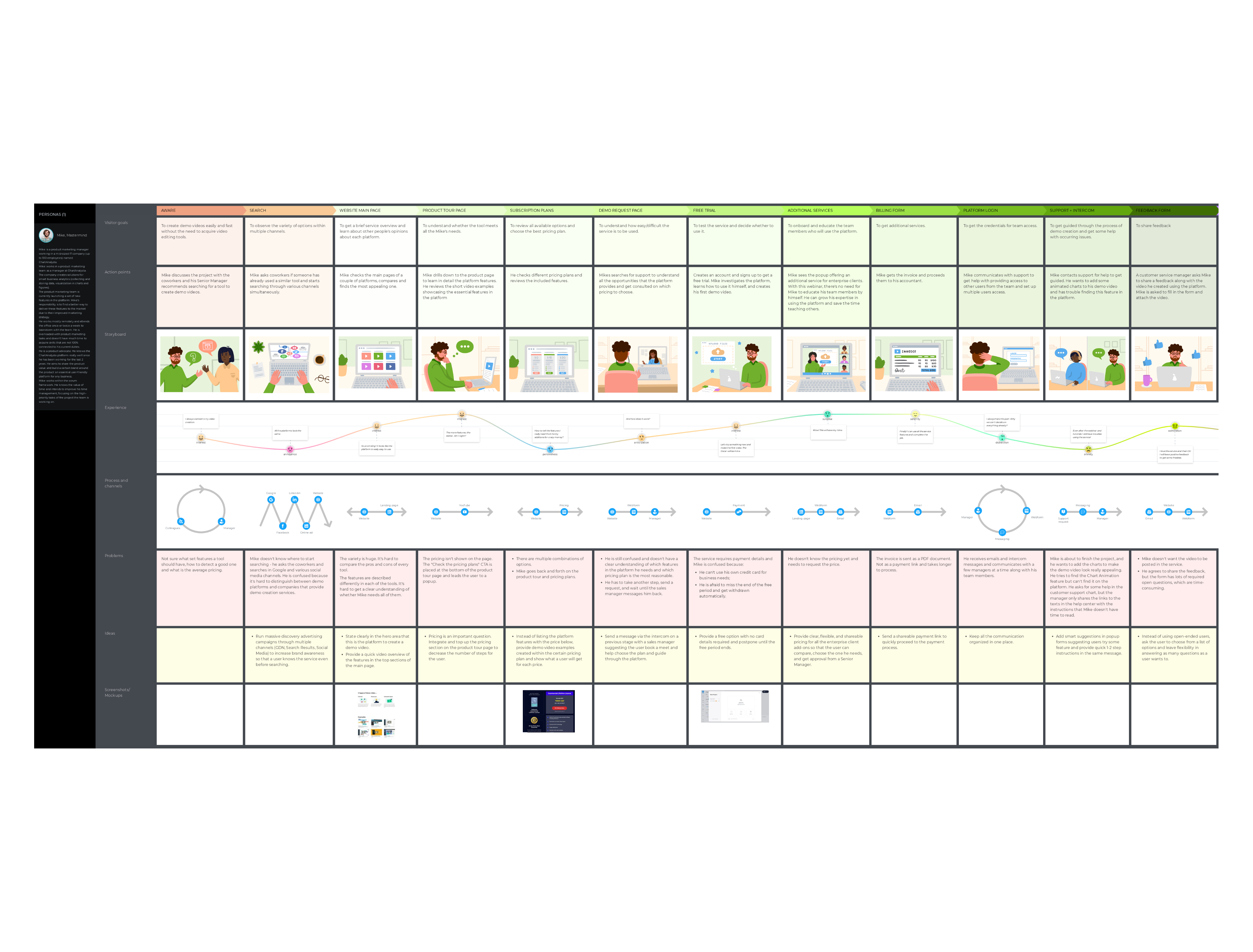Have you ever stopped to ponder why some websites and mobile and web apps just 'feel right,' effortlessly guiding you through a seamless journey while others leave you navigating a labyrinth of frustration?
In the digital age, where our interactions are increasingly mediated through screens, the answer lies in the realm of user experience. What is user experience, and why does it matter in a world filled with digital interfaces?
In this exploration, we unravel the essence of UX, examine its tangible benefits, and showcase real-world examples that go beyond the ordinary. Prepare to discover the silent architect shaping our digital encounters.
Contents
What is user experience?
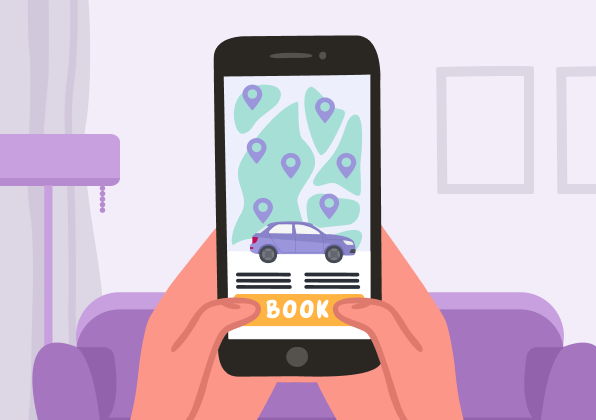
Imagine navigating a website effortlessly, seamlessly finding what you need, and feeling a sense of satisfaction after your interaction. That delightful encounter is what we refer to as user experience. It's not just about the buttons you click or the pages you visit; it's a holistic journey that encapsulates your perceptions, emotions, and responses while engaging with a product, system, or service.
As you explore a website, use an application, or interact with different interfaces, user experience quietly orchestrates your entire journey. Think of it as the total of how you feel, react, and perceive every aspect of your interaction.
Why does it matter? A positive user experience is the secret sauce for user satisfaction, engagement, and, ultimately, loyalty. It's the difference between frustration and delight, confusion and clarity, a one-time visit, and a long-lasting relationship with a brand.
Picture yourself on a user-friendly e-commerce website — the navigation is intuitive, the search function understands your queries, and the checkout process is a breeze. That's not just usability; it's a positive user experience that leaves you satisfied and more likely to return.
Consider the aesthetics of a well-designed mobile app — clean, visually pleasing, and consistent in its branding. It's not just about looks; it's about creating an environment that appeals to your senses, contributing to a positive aesthetic user experience.
Imagine a website designed to cater to everyone, including individuals with disabilities. It's not just about reaching a broader audience; it's about ensuring that all people, regardless of abilities, can navigate and engage — that’s accessibility, an essential aspect of user experience.
Read also: Improving user experience in e-commerce: a case study
Today, user experience is the reason why you enjoy scrolling through your favorite social media app or effortlessly find the information you need through a search engine. It's the guide that shapes our digital encounters, and it's the focus of designers and businesses striving to make every interaction positive and memorable.
So, the next time you find yourself effortlessly moving through a website, feeling satisfied after completing a task in an app, or simply enjoying a digital experience, remember — that's the magic of a great user experience at work. It's the art of transforming interactions, making technology intuitive, and ensuring that every click, swipe, or tap leaves you with a positive and lasting impression.
Key elements of user experience

As we already know, user experience stands as the linchpin between functionality and user satisfaction. Even in the briefest interactions, key elements play a vital role in shaping how users perceive and engage with a product or platform. Let’s review some fundamental elements that underpin a seamless and impactful user experience.
- Usability
The ease with which users can interact with a system to achieve their goals.
Example: An e-commerce website with a straightforward navigation structure, intuitive search functionality, and a straightforward checkout process enhances usability.
- Accessibility
The extent to which a product can be used by people with disabilities.
Example: Websites that provide alternative text for images or have keyboard shortcuts improve accessibility for users with visual or motor impairments.
- Aesthetics
The visual appeal and design of the interface.
Example: A mobile app with a clean, visually pleasing design and consistent branding elements contributes to a positive aesthetic user experience.
- Performance
The speed and responsiveness of a system.
Example: A mobile game that loads quickly, runs smoothly, and responds promptly to user inputs ensures a positive performance-oriented user experience.
- Credibility
The trustworthiness and believability of a product or service.
Example: An informational website that cites reputable sources and has a professional design instills confidence in users, contributing to a positive credibility user experience.
- Desirability
The emotional appeal of a product or system.
Example: Social media platforms often incorporate features like personalized content feeds and engaging visuals to make the user experience more desirable and emotionally satisfying.
Benefits of a good user experience

Exploring and managing user experience in your organization can yield a myriad of benefits, contributing to complete success and user satisfaction. Here are some advantages:
- Enhanced user satisfaction
Well-managed UX leads to improved user satisfaction. When users find products or services easy to use, aesthetically pleasing, and aligned with their needs, it creates a positive impression.
- Increased user loyalty
A positive user experience fosters customer loyalty. Users are more likely to stick with a brand or service that consistently meets their expectations, leading to long-term customer relationships.
- Competitive advantage
Organizations with superior user experiences gain a competitive edge. In a crowded market, a seamless and enjoyable user journey sets a brand apart and attracts more users.
- Reduced support costs
A user-friendly design reduces the likelihood of user errors and confusion, which, in turn, leads to fewer support requests and decreases the associated support costs.
- Higher conversion rates
Improved UX often translates to higher conversion rates. Be it completing a purchase, filling out a form, or signing up for a service, a positive user experience encourages users to take desired actions.
- Increased efficiency and productivity
Internally, well-designed systems enhance efficiency and productivity. Employees working with user-friendly tools can complete tasks more quickly and effectively.
- Informed decision-making
By exploring user experiences, organizations gain valuable insights about user behavior and preferences. This information supports data-driven decision-making, allowing for the creation of products and services that better align with user needs.

- Positive brand image
A focus on UX contributes to a positive brand image. Users associate well-designed and user-friendly experiences with a brand that cares about their needs and values their time.
- Adaptability and innovation
A commitment to improving user experiences encourages organizations to stay adaptable and innovative. By continuously seeking to improve and adapt to evolving user needs, organizations can remain at the forefront of their industries.
- Reduced user churn
Users are less likely to abandon a product or service if they consistently have positive experiences. Reduced user churn leads to a more stable user base, contributing to sustained business success.
- Cross-platform consistency
Organizations that manage UX effectively ensure consistency across various platforms. Regardless of how users interact—through a website, mobile app, or other channels—a cohesive and uniform experience enhances usability.
- Accessibility and inclusivity
Prioritizing UX includes considerations for accessibility, making products and services usable by individuals with diverse abilities. This commitment to inclusivity aligns with ethical business practices. Search engines also rank user-friendly websites higher.
- Optimized marketing ROI
A positive user experience often means effective marketing. Satisfied users are more likely to share their experiences, contributing to word-of-mouth marketing and organic growth.
- Customer-centric approach
Managing user experiences places the customer at the center of organizational strategies. This customer-centric approach ensures that products and services are designed with the end user in mind.
In summary, actively exploring and managing user experiences in your organization is not just about creating visually appealing interfaces; it's a strategic investment with far-reaching benefits, influencing customer perception, employee efficiency, and total organizational success.
Real-world examples of good user experience
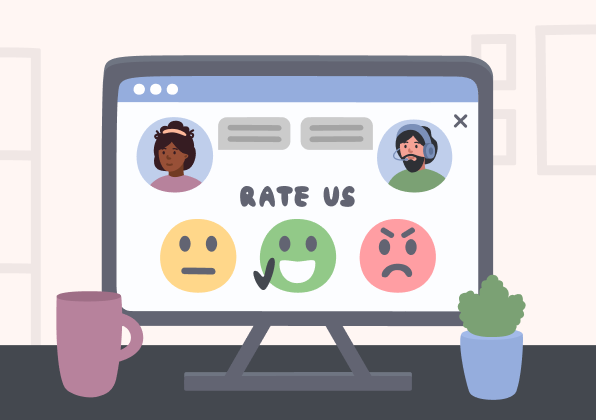
There are many examples of good UX that can be adopted and implemented in your organization. Here are some of them:
- Apple's iOS interface. Apple's mobile operating system stands out for its intuitive and user-friendly design, creating a seamless experience for users across various devices.
- Google search. Google's minimalist and highly functional search interface exemplifies a focus on usability, providing users with a straightforward and efficient means of accessing information.
- Amazon's one-click purchase. Amazon's patented one-click purchase feature simplifies the checkout process, minimizing friction and enhancing the entire user experience.
- Airbnb's visual appeal. Airbnb's website and app prioritize visual appeal, featuring high-quality images and an intuitive interface that contributes to a desirable user experience.
- Tesla's touchscreen interface. Tesla's car interface is renowned for its user-friendly touchscreen controls. It integrates essential functions seamlessly, providing an intuitive experience for drivers.
- Spotify's personalized recommendations. Spotify employs a sophisticated recommendation algorithm that tailors music suggestions based on a user's listening history. This personalized approach enhances user engagement and satisfaction.
- Duolingo's gamified learning. Duolingo gamifies language learning, making the process both engaging and enjoyable. Progress tracking, rewards, and interactive lessons make it user-friendly and effective.
- Slack's collaboration platform. Slack's collaboration platform is designed for ease of use, with a clean interface that simplifies communication. Its intuitive features and integrations contribute to a seamless team collaboration experience.
- Netflix's seamless streaming. Netflix's streaming service offers a seamless viewing experience. The platform remembers where users left off, grants personalized recommendations, and ensures smooth playback across devices.
- Instagram's visual storytelling. Instagram focuses on visual storytelling, providing users with a straightforward platform for sharing images and videos. The simplicity of its design contributes to a visually appealing and user-friendly experience.
- Pinterest's visual discovery. Pinterest's emphasis on visual discovery through curated boards and recommendations makes it a user-friendly platform for discovering and organizing ideas.
User experience is a multifaceted concept encompassing various aspects of design, functionality, and emotional response. By prioritizing a smooth user experience, businesses and designers can create products and services that resonate with users, ultimately fostering satisfaction, loyalty, and success.
User experience templates: ready-to-go, free-to-download
To simplify your initiation into the study of mapping a user experience, we're sharing some basic customer journey map templates that make it easy to get started:
- The experience of a mobile app user;
- The experience of an online platform user;
- The experience of streaming service users.
Wrapping up
It's evident that UX is more than just a design principle — it's the silent architect shaping our digital encounters. As we navigate the vast landscape of websites, apps, and digital interfaces, the quality of our interactions significantly influences our satisfaction, loyalty, and overall perception.
User experience is about creating seamless journeys, turning technology into an intuitive companion, and ensuring every click, swipe, or tap leaves a positive and lasting impression. From the aesthetics of a well-designed app to the inclusivity of websites catering to diverse abilities, website user journey UX design plays a vital role in shaping user engagement. Each element, from usability and performance to credibility and desirability, contributes to the holistic journey, mapping out how users interact with your product and how they perceive the brand.
Incorporating the customer journey mapping process and customer journey analytics into your design strategy gives a deeper understanding of how users move through various touchpoints. This insight is key to building a user-friendly experience that aligns with customer expectations, offering value at every step.
The aspects of user experience extend beyond design to include strategic design thinking in the early stages of the design process, allowing teams to anticipate and address potential challenges. Creating software, mobile apps, or websites requires understanding the entire journey to ensure users find your product both visually appealing and intuitive to use.
Real-world examples from industry leaders like Apple, Google, and Amazon showcase how prioritizing UX through structured processes, like customer journey mapping and user research, can result in innovative and user-friendly products. These companies continuously evolve their offerings by integrating UX design best practices, proving that understanding and optimizing the user journey is crucial for long-term success.
As we traverse the ever-evolving digital landscape, organizations that embrace design thinking not only create memorable experiences but also position themselves to adapt to changing user needs, optimizing marketing ROI and fostering a positive brand image. In the end, the magic of user experience lies in its ability to transform digital encounters into delightful, meaningful journeys.
